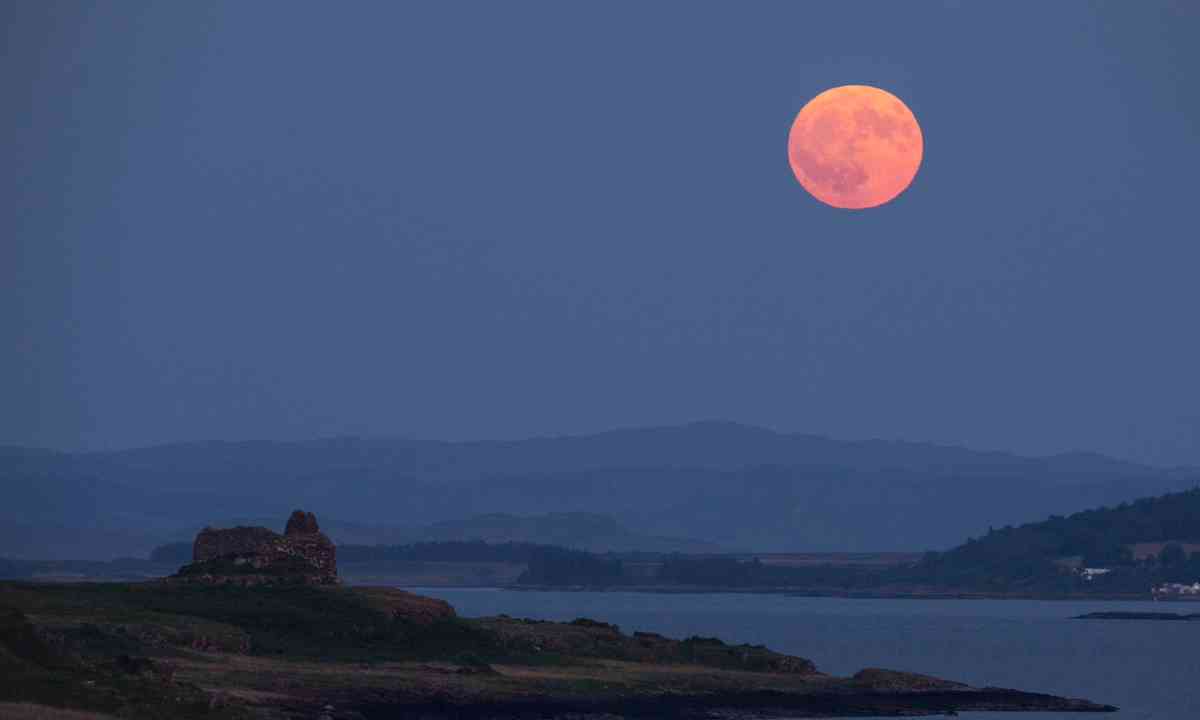During the recent weekend, people across the globe were treated to a mesmerizing spectacle as the Strawberry Moon adorned the night sky. Social media platforms buzzed with awe-inspiring snapshots of the moon, showcasing its enchanting pinkish hue, captured from iconic locations like the Empire State Building and Stonehenge.
The distinct colour of the Strawberry Moon owes itself to the presence of pollution and dust particles in Earth's atmosphere, which alter the moon's natural light and bestow upon it a unique appearance. Interestingly, the term "Strawberry Moon" is not directly linked to the moon's colour in June; rather, it finds its origins in ancient customs and traditions. This particular full moon is bestowed with numerous other names, including Red Moon, Honey Moon, Flower Moon, Hot Moon, Hoe Moon, and Planting Moon.
_1686124013.png)
According to NASA, the Maine Farmers' Almanac took up the practice of publishing Native American names for full moons during the 1930s. The June full moon holds significance among Native American tribes like the Algonquin. NASA provided clarification, stating that the publication known as the Maine Farmer's Almanac was the first to introduce Native American names for the full moons in the 1930s. As per the Almanac, the June full moon or the final full moon of the spring season is universally referred to as the Strawberry Moon among Algonquin tribes.
The name "Strawberry Moon" emerged from the observation that this period coincided with the blooming of strawberry plants in North America, signalling the optimal time for gathering ripe strawberries. Additionally, the moon is also referred to as the Mead Moon or Honey Moon. According to NASA, historical writings indicate that the period around the Summer solstice in late June was when honey was fully matured and could be collected from beehives or in the wild, which led to the association of this full moon as the "sweetest" Moon.
_1686124072.png)
Alongside the enchanting Strawberry Moon, stargazers were also able to witness the presence of Mars and Venus in the night sky. According to additional information provided by NASA, historical records suggest that the period surrounding the Summer solstice in late June was when honey reached its ripeness and could be harvested either from beehives or in natural settings, making this full moon the "sweetest" Moon. In addition to the mesmerizing Strawberry Moon, astronomy enthusiasts had the chance to witness the presence of both Mars and Venus in the night sky.
Venus appeared as a luminous white speck positioned approximately 22 degrees above the horizon, at a distance of about 67 million miles (109 million kilometres) from Earth. Mars, having recently traversed the sparkling Beehive Cluster, was visible at an elevation of around 28 degrees above the horizon. The excitement continues to mount as the forthcoming full moon, known as the Buck Moon, is slated to grace the night sky on July 3, promising yet another enchanting celestial spectacle for all to relish.
© Copyright 2023. All Rights Reserved Powered by Vygr Media.

























